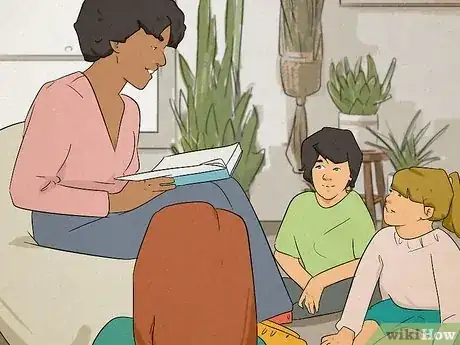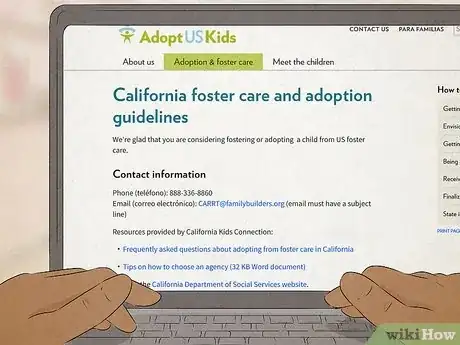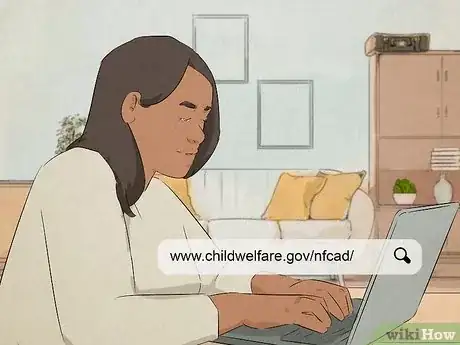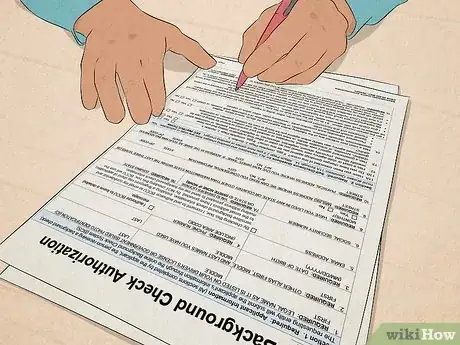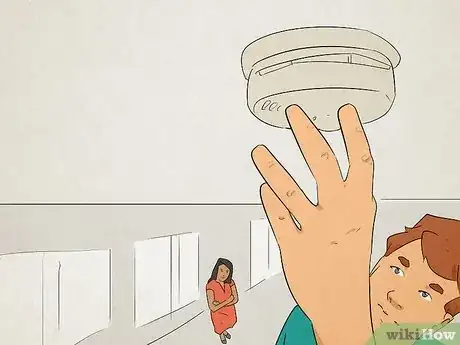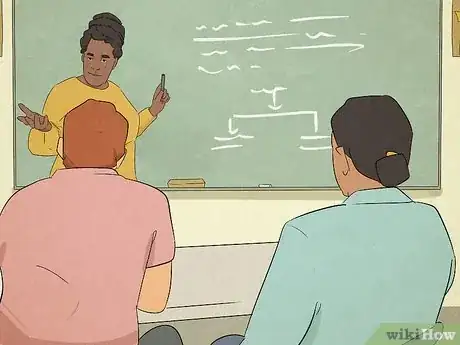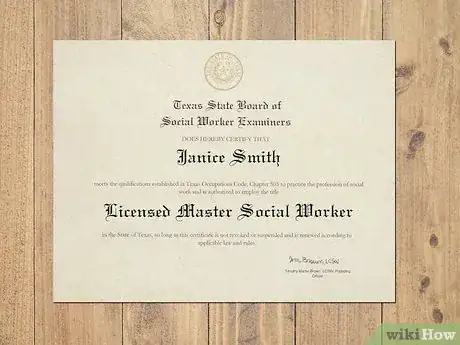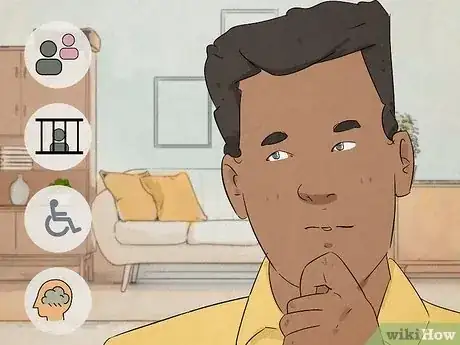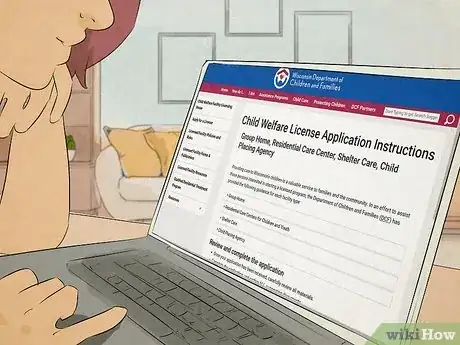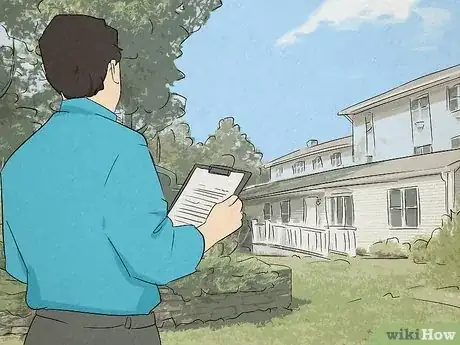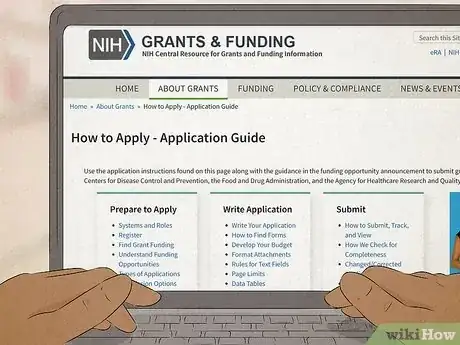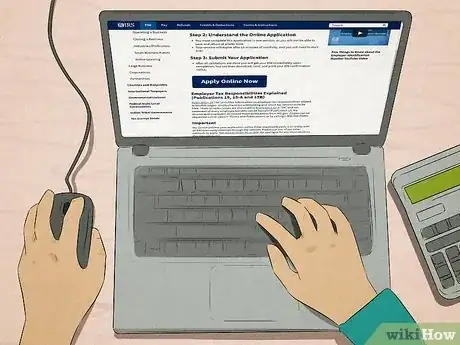This article was co-authored by Jacob Christenson, PhD, LMFT and by wikiHow staff writer, Janice Tieperman. Dr. Jacob Christenson is a Licensed Marriage and Family Therapist and the CEO of Covenant Family Solutions. With more than 20 years of experience, he specializes in substance abuse issues, parenting, medical family therapy, couples counseling, family therapy, and counseling for treatment-resistant adolescents. Dr. Christenson has also been published in many peer-reviewed journals, including Contemporary Family Therapy: An International Journal and Journal of Marital and Family Therapy. He is an AAMFT Approved Supervisor for the American Association for Marriage and Family Therapy (AAMFT) and a Clinical Fellow for the Iowa Association for Marriage and Family Therapy (IAMFT). Dr. Christenson holds a BS in Psychology from California Polytechnic State University, an MS and PhD in Marriage and Family Therapy from Brigham Young University, and an MBA from The University of the People.
There are 26 references cited in this article, which can be found at the bottom of the page.
This article has been viewed 7,207 times.
Foster parents are the unsung heroes of everyday society. In the United States alone, foster parents provide refuge, love, and support to over 400,000 children without a stable home of their own.[1] Are you ready to take an unforgettable step forward to make a difference in a child’s life? Don’t worry. We’re here to walk you through every step of becoming a licensed foster parent. If your childcare goals are a little bit bigger, we’ve still got you covered—scroll down for a guide on how to set up your own group home.
Steps
Becoming a Foster Parent
-
1Start your journey as a foster parent for the experience, not for the money. Being a foster parent is incredibly rewarding, but it won’t make you a lot of money in the process. Yes, foster parents do get paid regularly; however, this stipend reimburses you for the money you’ve already spent caring for your foster child. Your exact stipend amount will depend on where you live, but it definitely won’t leave you flushed with cash.[2]
- Your stipend amount may also depend on the type of child you’re caring for. You’ll get a larger stipend while fostering children with more demanding needs.[3]
- Foster homes allow you to raise a few foster kids in a family setting, while group homes are facilities that are overseen directly by the state. Group homes are more community-based and typically help up to 12 kids at once.[4] Plus, children are only placed in group homes for a short, structured period of time.[5]
-
2Meet your state and local requirements to be a foster parent. Foster care is state-regulated, so your eligibility really depends on where you live. All states have different age and financial requirements, as well as other official red tape. Double-check that you meet all of these criteria before you start the application process.[6]
- This site outlines exact foster parent requirements for each state: https://www.adoptuskids.org/adoption-and-foster-care/how-to-adopt-and-foster/state-information
Advertisement -
3Choose a foster care agency to work with. Foster care services are managed through smaller agencies, which are either private or public. Feel free to look at multiple agencies before making your decision![7]
- Public agencies are operated by the government on a county level, while private agencies are not. Since they’re not run by the government, some private agencies are dedicated to specific values and religious beliefs.[8]
- Click here to find a directory of different foster care agencies: https://www.childwelfare.gov/nfcad/
-
4Meet with your chosen agency and complete the necessary paperwork. Some agencies hold standard informational meetings, while others may stop by your home. At this meeting, the agency employee will leave you with some required applications and forms, along with a packet of rules and regulations that are specific to your state.[9]
-
5Go through a home study. Home studies are run and managed by an agency caseworker, who will take plenty of time to learn about your household, daily life, routines, neighborhood, experience with kids, and more. They usually take at least 3 months to complete, since they require the caseworker to do a lot of research on you and other members of your household. At the end of the study, your caseworker will submit a report based on what they learned about your family.[10]
- A home study may seem like an invasion of privacy, but it’s not meant to make you feel uncomfortable or judged.
- Some agencies might make the home study part of your foster parent training.
-
6Give credible references to the agency. Reach out to at least 3 people who can vouch for your character and work ethic. Ask if you can pass their contact info along to your caseworker, who will give them a call to ask about you.[11]
-
7Complete and pass the required background checks. Background checks are a must for foster parents in all states and US territories. According to federal law, you’ll need to get both criminal and child abuse background checks before you can be certified.[12]
- You’ll need to send in your fingerprints as part of the background check.
-
8Pass a home inspection. During a home inspection, a caseworker will stop by your home to look for any potential health and safety risks. Ideally, your home should be clean, tidy, and easy to move through, while also having proper child-proofing measures in place. Here are a few things your caseworker might check during the inspection:[13]
- If you have the necessary safety equipment (first aid kit, fire extinguisher, etc.)
- If the carbon monoxide and smoke detectors are working
- If the windows are sturdy and secure
- If the heat and AC work properly
-
9Take part in the required number of training hours. The exact number of training hours depends on where you live, but all foster parents have to go through at least 4 training sessions before they can foster a child. Throughout your training, you’ll learn:[14]
- What to expect as a foster parent
- How to work well with your agency
- How to help a child mesh into your household
-
10Receive your official license to start getting child placements. Once all your training and prep work is done, a licensing worker will submit an official report about you, explaining which types of kids would be a good fit for your household. They might also suggest some extra training classes that could help you improve as a foster parent. You’ll get your license after this employee sends in the necessary documents.[15]
- You won’t be able to foster any kids until you have a physical copy of your license.
Creating a Group Home for Children
-
1Choose a niche for your child group home. Children who are placed in group homes come from a wide variety of challenging backgrounds and circumstances.[16] Before you really lay out the groundwork for your business, take a moment to figure out which kids you’d like to focus on. Here are the most common types of children who typically stay in group homes:[17]
- Dependent Children: Dependent children have experienced a lot of abuse and/or neglect in the past, and aren’t considered a good fit for a standard foster family.
- Juvenile Wards: Juvenile wards are kids who were convicted of a crime at some point.
- Developmentally Disabled: These children are diagnosed with developmental disabilities like ADHD, cerebral palsy, autism spectrum disorder, sight issues, hearing issues, learning difficulties, and more.[18]
- Serious Emotionally Disturbed (SED): Children with SED have serious mental, emotional, or behavioral health issues that impact their day-to-day life, such as childhood schizophrenia, mood-related disorders, conduct disorder, and more.[19]
-
2Apply for the proper licensing to run a group home. Group home licenses are state-regulated, so there’s no one-size-fits-all application process to get you the approval you need. Visit your state government’s website to find out which legal hoops you’ll need to jump through to get your group home started.[20] You can usually find this info on a state-specific:
-
3Draft a business plan for your group home. A business plan acts as the legal backbone of your business and outlines every aspect of how your group home will run, from marketing and organization to funding and financial planning. Make sure that you include the following:[24]
- Executive Summary
- Company Description
- Market Analysis
- Organization and Management
- Service or Product Line
- Funding Request
- Financial Projections
- Appendix
-
4Submit an application to be recognized as a non-profit organization. Although a group home technically qualifies as a “business,” it doesn’t make money in the way that a supermarket or department store would. Official foster care funds are usually used to pay for a child’s stay at a group home, but your business has to be nonprofit in order to qualify for this money. Here’s what you’ll need to become a nonprofit corporation:[25]
- Draft and file articles of incorporation
- Write specific bylaws for your organization
- Appoint and meet with your organization’s board of directors
- Submit a federal tax exemption form to the IRS
- Submit a state tax exemption form to the proper authority for your state
-
5Set up your group home in a place that meets local zoning requirements. Meet with your local zoning official before you start building or developing your group home. Some places might not let you operate a group home out of your neighborhood—in this case, you’ll need a back-up plan.[26]
-
6Apply for grants to help fund your group home. Starting a group home is a big financial commitment—after all, you’re essentially starting your own business! Thankfully, federal organizations like the National Institute of Mental Health (NIMH) offer grants for projects like this. Start the application process here: https://grants.nih.gov/grants/how-to-apply-application-guide.html[27]
- Keep in mind that there might not be a lot of funding options available. This is because of the Federal Family First Prevention Services Act of 2018, which focuses on placing kids with foster families instead of in group homes.[28]
-
7Set up a payroll system for your future employees. Apply for an Employer Identification Number (EIN) from the IRS, and get W-4 forms for your future employees to fill out. Take some time to iron out some other logistical details, like the pay period for your workers and the payment policy for days off.[29]
- Here’s where you can apply for an EIN: https://www.irs.gov/businesses/small-businesses-self-employed/apply-for-an-employer-identification-number-ein-online
- Download the W-4 form here: https://www.irs.gov/pub/irs-pdf/fw4.pdf
- The IRS has published a handy guide to help you navigate the red tape around payroll, taxes, and more. Feel free to check it out here: https://www.irs.gov/publications/p15
-
8Hire qualified employees for your group home. A group home covers a lot of different bases, ranging from professional support to basic housekeeping. Your staff needs to meet a special set of state-sanctioned requirements since they’ll be working with and around kids.[30] Check with a member of your local or state government to find out what these requirements are.[31]
- In some states, basic staff members have to be at least 19 years old with a college background in fields like psychology, special education, sociology, counseling and guidance, social work, and criminal justice.[32]
- Certain staff members, like the resident care staff, group home managers, and program directors may need to meet more specific requirements, such as having past experience in child welfare- or group home-related jobs, having special certifications, and/or logging a specific number of professional training hours.
- Make sure that your staff is comfortable working with kids through a trauma-informed treatment model.[33]
-
9Work with local agencies to get children placed in your home. Plan to work with groups at the county level, like probation departments, social services, and mental health agencies. Schedule a meeting with some of the staff at these departments and agencies to discuss the support and assistance that your kids will need.[34]
- You might not get a lot of placements for your group home—this is largely because of the Federal Family First Prevention Services Act of 2018, which prioritizes foster family placements over group home placements.[35]
Warnings
- Remember that some foster children have an extensive history that you're not going to be able to know or understand right away. Always start with patience and understanding, recognizing that part of your goal is to get to know them and their unique situation in their life, so that you can show them that you're an ally and not an antagonist.[36]⧼thumbs_response⧽
References
- ↑ https://www.adoptuskids.org/meet-the-children/children-in-foster-care/about-the-children
- ↑ https://adoption.org/foster-parents-get-paid-2
- ↑ https://www.dfps.state.tx.us/Doing_Business/Purchased_Client_Services/Residential_Child_Care_Contracts/Rates/
- ↑ https://www.acf.hhs.gov/cb/faq/foster-care2
- ↑ https://www.childwelfare.gov/topics/outofhome/group-residential-care/
- ↑ https://www.adoptuskids.org/adoption-and-foster-care/how-to-adopt-and-foster/state-information
- ↑ https://nfpaonline.org/foster
- ↑ https://fosterandadopt.jfs.ohio.gov/wps/portal/gov/ofc/foster-care/becoming-a-foster-parent/choosing-a-foster-care-agency
- ↑ https://nfpaonline.org/foster
- ↑ https://www.adoptuskids.org/adoption-and-foster-care/how-to-adopt-and-foster/getting-approved/home-study
- ↑ https://nfpaonline.org/foster
- ↑ https://www.childwelfare.gov/topics/systemwide/laws-policies/statutes/background/
- ↑ https://www.afs4kids.org/blog/your-california-foster-care-home-inspection-checklist/
- ↑ https://www.adoptuskids.org/adoption-and-foster-care/how-to-adopt-and-foster/getting-approved/training
- ↑ https://nfpaonline.org/foster
- ↑ Jacob Christenson, PhD, LMFT. Licensed Marriage and Family Therapist. Expert Interview. 22 October 2021.
- ↑ https://www.cdss.ca.gov/cdssweb/entres/forms/english/pub223.pdf
- ↑ https://www.cdc.gov/ncbddd/developmentaldisabilities/facts.html
- ↑ https://ccfhh.org/what-is-serious-emotional-disturbance-sed/
- ↑ https://dcf.wisconsin.gov/cwlicensing/apply
- ↑ https://dcf.wisconsin.gov/cwlicensing/apply
- ↑ https://www.dhs.state.il.us/page.aspx?item=47490
- ↑ https://www.michigan.gov/lara/0,4601,7-154-89334_63294_5529-314135--,00.html
- ↑ https://www.sba.gov/business-guide/plan-your-business/write-your-business-plan
- ↑ https://www.cdss.ca.gov/cdssweb/entres/forms/English/pub326.pdf
- ↑ https://www.michigan.gov/lara/0,4601,7-154-89334_63294_5529_49572-82370--,00.html
- ↑ https://africanamericangrants.org/grants-for-group-homes.html#Grants_to_Start_a_Group_Home
- ↑ https://www.childwelfare.gov/topics/outofhome/group-residential-care/
- ↑ https://www.sba.gov/business-guide/manage-your-business/hire-manage-employees
- ↑ https://www.childwelfare.gov/topics/outofhome/group-residential-care/
- ↑ https://www2.illinois.gov/dcfs/aboutus/notices/Documents/rules_403.pdf
- ↑ https://dcf.wisconsin.gov/files/publications/pdf/4100.pdf
- ↑ https://www.childwelfare.gov/topics/outofhome/group-residential-care/
- ↑ https://www.cdss.ca.gov/cdssweb/entres/forms/english/pub223.pdf
- ↑ https://www.childwelfare.gov/topics/outofhome/group-residential-care/
- ↑ Jacob Christenson, PhD, LMFT. Licensed Marriage and Family Therapist. Expert Interview. 22 October 2021.
